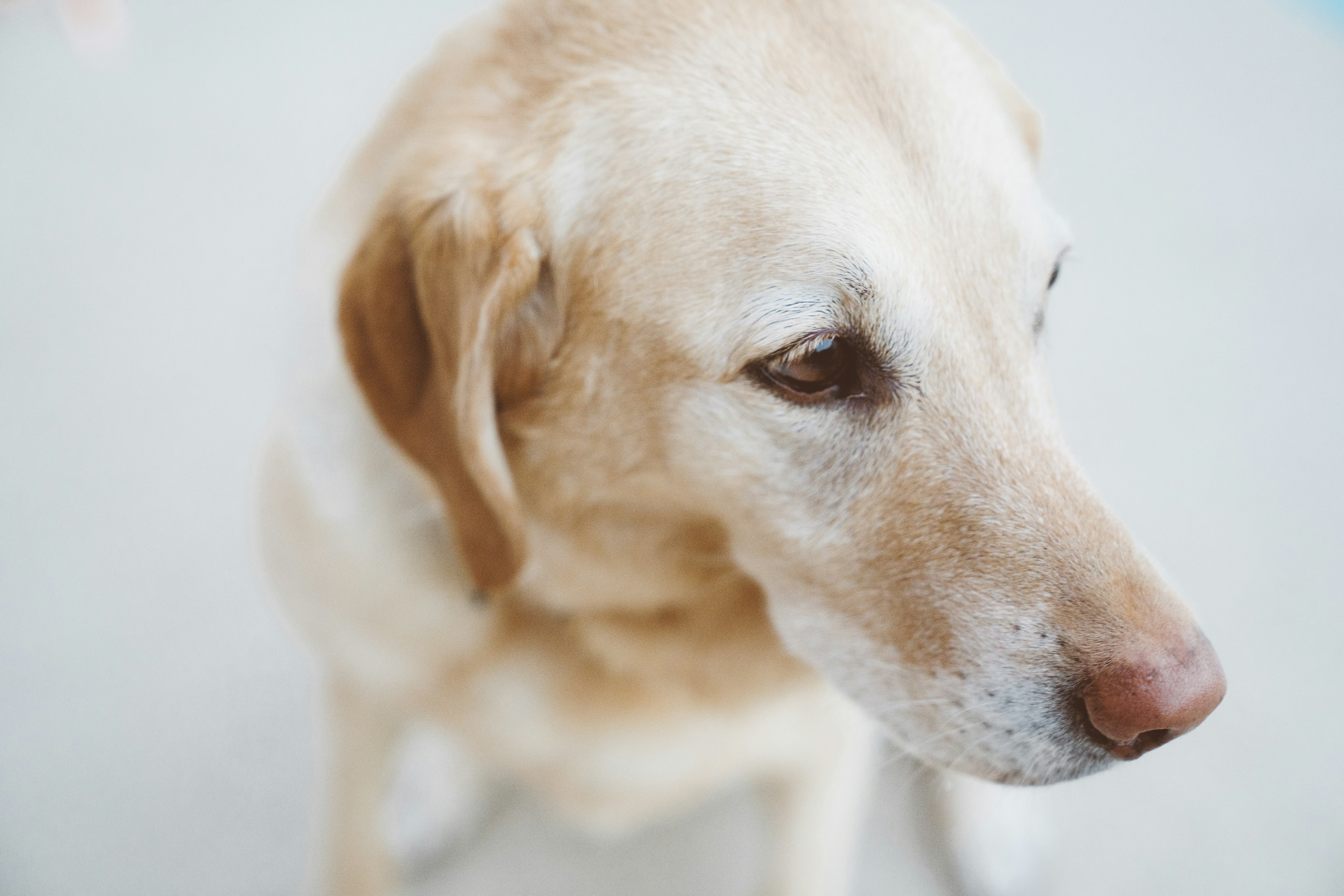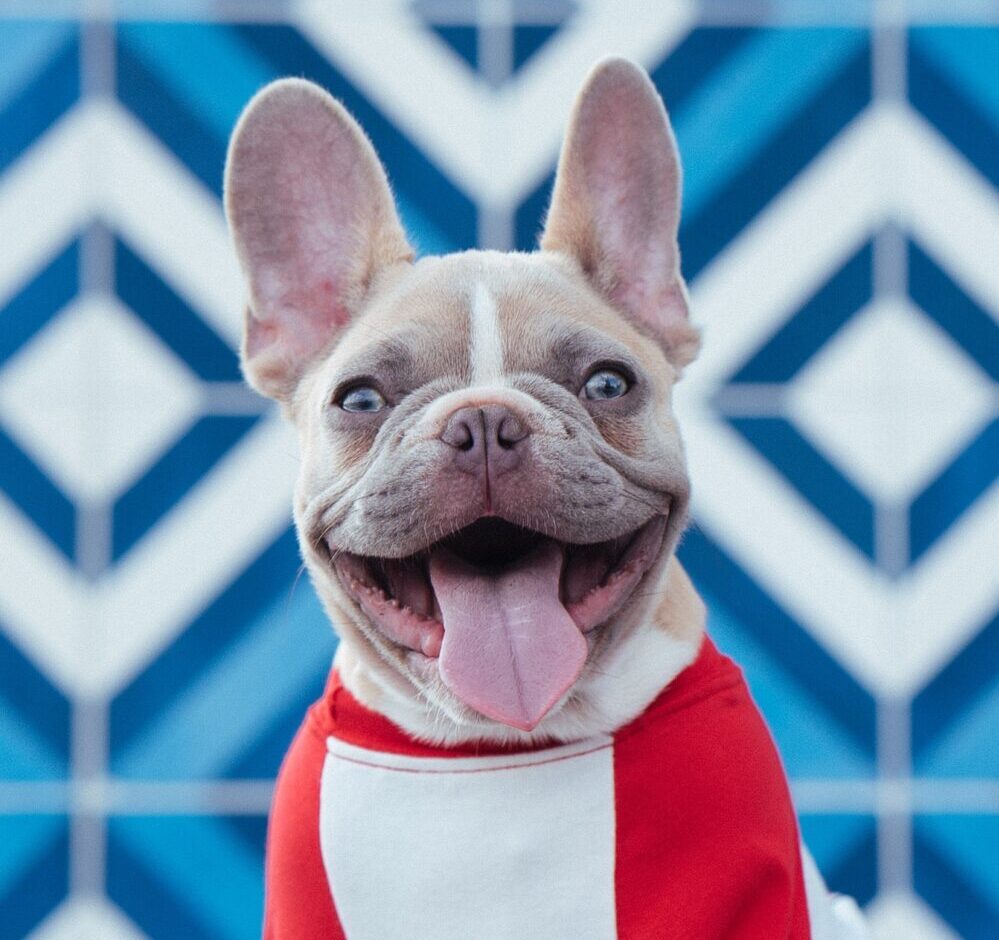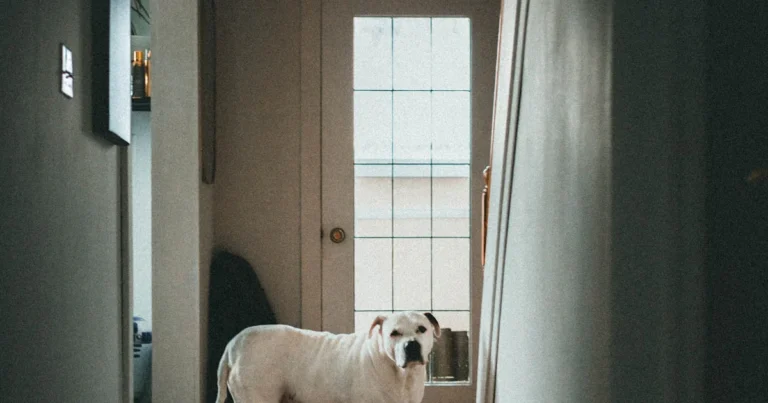Support our educational content for free when you purchase through links on our site. Learn more
What Are the 6 Best Short Nose Dog Breeds Hypoallergenic? 🐶 (2025)

If you’re dreaming of a lovable, snub-nosed pup but worried about allergies, you’re not alone! Many dog lovers assume that short-nosed (brachycephalic) breeds are naturally hypoallergenic — spoiler alert: they’re not. At Snubby Puppy™, we’ve sniffed out the truth behind the sneezes and sniffles. From the silky Shih Tzu to the charming Boston Terrier, some flat-faced friends are better allergy matches than others. But beware: popular breeds like Pugs and French Bulldogs might leave you reaching for tissues more than treats.
Curious which snubby breeds make the best companions for allergy sufferers? Stick around as we reveal our top 6 picks, bust common myths, and share expert tips on managing allergies while living your best snubby life. Plus, discover grooming hacks and home setup secrets that can make all the difference!
Key Takeaways
- No short-nosed dog is 100% hypoallergenic; allergy potential depends largely on coat type and shedding, not nose shape.
- Shih Tzus and Boston Terriers rank highest among snub-nosed breeds for allergy sufferers due to their low-shedding, hair-like coats.
- Popular breeds like Pugs and French Bulldogs shed more and produce more allergens, making them less ideal for allergy-prone homes.
- Regular grooming, wrinkle care, and home allergen management are essential to reduce symptoms and enjoy life with your snubby pup.
- Spend time with your chosen breed before adopting to test your personal allergy tolerance — the “sniff test” is a must!
👉 Shop Grooming Essentials & Allergy Management Products:
- FURminator deShedding Tools on Amazon | Chewy
- Hypoallergenic Dog Shampoos on Amazon | Chewy
- HEPA Air Purifiers on Amazon
Table of Contents
- ⚡️ Quick Tips and Facts: Snub-Nosed & Allergy-Friendly Pups!
- 🐾 The Snubby Puppy Story: Understanding Brachycephalic Breeds
- 🔬 Decoding ‘Hypoallergenic’: What Does It Really Mean for Dog Allergies?
- 👃 What Makes a Dog ‘Short-Nosed’ (Brachycephalic)?
- 🤔 The Million-Dollar Question: Are Short-Nosed Dogs Truly Hypoallergenic?
- 🐶 Our Top Picks: Short-Nosed Dog Breeds Often Considered Allergy-Friendly (and the Nuances!)
- The Shih Tzu: The Flowing-Haired Allergy Myth-Buster
- The Boston Terrier: The American Gentleman with a Low-Shed Coat
- The French Bulldog: Popular Pick, But What About the Shedding?
- The Pug: Adorable Wrinkles, But Are They Allergy-Friendly?
- The Cavalier King Charles Spaniel: A Sweet Face, A Moderate Shed
- The Bulldog: Iconic Grin, But Not a Hypoallergenic Hero
- 🏡 Living Your Best Life: Managing Dog Allergies with a Snub-Nosed Pal
- ❌ Busting Myths: Common Misconceptions About Hypoallergenic Dogs
- ✨ Beyond the Breed: Other Factors Influencing Dog Allergens
- ❤️ Finding Your Perfect Snubby Match: More Than Just Allergies
- Conclusion: The Snubby Truth About Allergies
- Recommended Links
- FAQ: Your Snubby Puppy Allergy Questions Answered!
- Reference Links
Here is the main body content for your blog post, crafted by the expert team at Snubby Puppy™.
⚡️ Quick Tips and Facts: Snub-Nosed & Allergy-Friendly Pups!
In a hurry? We get it! Life with a snubby puppy is a whirlwind of snorts, cuddles, and cleaning face wrinkles. Here’s the low-down on short-nosed dogs and allergies.
| Fact or Fiction? 🤔 | The Snubby Puppy™ Verdict 🐾 |
|---|---|
| “Short-nosed dogs are hypoallergenic.” | Fiction! ❌ No dog is 100% hypoallergenic. A dog’s “allergy-friendliness” depends on its coat and dander production, not its nose length. |
| “It’s the hair I’m allergic to.” | Fiction! ❌ Allergies are triggered by proteins in dander (skin flakes), saliva, and urine, which cling to hair. Less shedding = fewer allergens floating around. |
| “A Shih Tzu is a good choice for allergy sufferers.” | Fact! ✅ The Shih Tzu has hair, not fur, and sheds very little, making it one of the best snub-nosed options for people with allergies. |
| “French Bulldogs don’t shed.” | Fiction! ❌ Oh, they shed! Their short, fine hairs can get everywhere. They are not considered a top pick for moderate to severe allergy sufferers. |
| “Regular grooming helps reduce allergens.” | Fact! ✅ Absolutely! Frequent brushing, bathing, and cleaning those adorable face folds can significantly cut down on dander and other allergens in your home. |
🐾 The Snubby Puppy Story: Understanding Brachycephalic Breeds
Welcome to the club! Here at Snubby Puppy™, we are utterly, shamelessly obsessed with short-nosed dogs. From the comical snorts of a Pug to the dignified gaze of a Boston Terrier, we live and breathe these special pups. The technical term for these flat-faced cuties is brachycephalic, which is just a fancy Greek way of saying “short-headed.”
This unique head structure gives them their signature look but also comes with a special set of needs we know all too well. We’ve dealt with the reverse sneezes, the sensitive skin, and the eternal quest for the perfect food bowl. And one question we get all the time is about allergies. You see a cute, short-haired Frenchie and think, “He must be clean and allergy-free, right?” Well, let’s just say the answer is as wrinkly and complex as a Bulldog’s face.
🔬 Decoding ‘Hypoallergenic’: What Does It Really Mean for Dog Allergies?
Let’s get one thing straight right off the bat: the term “hypoallergenic” is more of a marketing buzzword than a scientific guarantee. The American College of Allergy, Asthma & Immunology (ACAAI) is very clear on this, stating that “studies have not shown that dogs can be hypoallergenic.” So, if you see a breeder promising a 100% allergy-free puppy, your skepticism alarm should be blaring! 🚨
The Science Behind the Sneeze: Dog Allergens Explained
So, what are you actually allergic to? It’s not the hair itself. The real culprits are proteins found in a dog’s:
- Dander: These are microscopic flakes of dead skin that every dog sheds.
- Saliva: Yep, those loving licks can leave behind allergy-triggering proteins.
- Urine: Proteins are present here, too, and can become airborne from carpets or bedding.
These allergens are sticky little hitchhikers. They latch onto your dog’s hair and, as your dog sheds, they get released into your home, settling on furniture, carpets, and floating in the air. This is why a dog’s coat type is so important.
Shedding vs. Dander: The Crucial Distinction
This is the key to everything!
- Low-shedding dogs don’t release as much allergen-covered hair into the environment. Their hair cycles are longer, or their coat texture (like a Poodle’s) traps the dander instead of letting it fly free.
- High-shedding dogs are like living glitter bombs of dander. Their constant shedding means a constant release of allergens into your personal space.
The takeaway: You’re looking for a dog that sheds less, not necessarily a dog with short hair or a short nose.
👃 What Makes a Dog ‘Short-Nosed’ (Brachycephalic)?
A dog’s nose length has absolutely zero to do with its allergen production. A short nose is simply a result of their skull shape. This brachycephalic anatomy is what gives them that smooshed-in, adorable face we love so much.
Common Characteristics of Brachycephalic Dogs
- Short Muzzle: The most obvious trait.
- Large, Round Eyes: Often prominent and full of expression.
- Underbite: The lower jaw often extends past the upper jaw.
- Skin Folds: Deep wrinkles around the nose and face are common (and need regular cleaning!).
- Snoring and Snorting: These noises are part of the brachy charm, caused by their compact airway.
Health Considerations for Our Flat-Faced Friends
Owning a snub-nosed dog is a unique joy, but it comes with responsibilities. Their anatomy can lead to certain health issues, known as Brachycephalic Obstructive Airway Syndrome (BOAS). It’s crucial to be aware of potential challenges like:
- Breathing difficulties, especially in heat and during exercise.
- Heat sensitivity and risk of heatstroke.
- Dental problems due to crowded teeth.
- Skin fold infections if not kept clean and dry.
- Eye issues due to their prominent eyes.
Understanding these potential issues is a core part of our Behavior Analysis at Snubby Puppy™, ensuring owners are prepared for the journey.
🤔 The Million-Dollar Question: Are Short-Nosed Dogs Truly Hypoallergenic?
Okay, let’s put it all together. You love the snub-nosed look, but you need a dog that won’t make you a sneezing, watery-eyed mess.
The direct answer is no, short-nosed dog breeds are not inherently hypoallergenic.
A dog’s allergy potential is determined by its coat, shedding level, and dander production—not the length of its snout. You can have a short-nosed dog that sheds a ton (hello, Pug!) and a long-nosed dog that barely sheds at all (like a Poodle).
The Truth About Low-Shedding Brachycephalics
The good news? Some brachycephalic breeds do have coats that are more suitable for allergy sufferers! These are the dogs that have hair instead of fur, or that have a coat that doesn’t go through heavy seasonal sheds. These are the pups we’ll be focusing on.
Why Some Short-Nosed Breeds Seem Better for Allergies
It’s all about the coat. A breed like the Shih Tzu, with its long, low-shedding hair, will release far fewer allergens into your home than a French Bulldog, which sheds its short, stiff hairs year-round. It’s that simple! But wait… what about drool and skin flakes from those adorable wrinkles? We’re getting to that!
🐶 Our Top Picks: Short-Nosed Dog Breeds Often Considered Allergy-Friendly (and the Nuances!)
Alright, let’s get to the fun part! We’ve ranked some of the most popular snub-nosed pups based on their “allergy-friendliness.” Remember, individual dogs can vary, but this is a great starting point. If you’re looking for a medium-sized companion, don’t miss our guide on What Are the 15 Best Medium Short Nose Dog Breeds? 🐶 (2025).
1. The Shih Tzu: The Flowing-Haired Allergy Myth-Buster
Allergy-Friendliness: ⭐⭐⭐⭐⭐ (5/5)
Don’t let the long, luxurious coat fool you! The Shih Tzu is a top contender for allergy sufferers. They have hair, not fur, which has a much longer growth cycle and sheds minimally. As Everyday Health notes, “The Shih Tzu is a small, affectionate dog that is a good choice for people with allergies.”
- ✅ The Good: They are considered one of the most hypoallergenic brachycephalic breeds. The dander they produce tends to get trapped in their long coat rather than floating around your house.
- ❌ The Nuance: That glorious coat requires significant grooming. Daily brushing is a must to prevent mats and tangles. Professional grooming is also a regular expense. If you neglect the coat, it can become a dander trap.
Our Snubby Puppy™ Take: If you’re committed to the grooming routine, the Shih Tzu is a fantastic choice for an allergy-suffering snub-nose lover.
2. The Boston Terrier: The American Gentleman with a Low-Shed Coat
Allergy-Friendliness: ⭐⭐⭐⭐ (4/5)
The dapper Boston Terrier sports a fine, short coat that sheds, but minimally compared to other short-haired breeds. They don’t have a dense undercoat, which is a huge plus for reducing allergens.
- ✅ The Good: Low grooming needs, minimal shedding, and less “doggy odor” than some other breeds. Their small size also means less surface area to produce dander.
- ❌ The Nuance: They do shed a little, and their fine hairs can weave into fabric. They can also be prone to gassiness (not an allergen, but… you know) and some drooling.
Our Snubby Puppy™ Take: An excellent, well-balanced choice. The Boston Terrier offers the snub-nosed look with a very manageable coat for most people with mild to moderate allergies.
3. The French Bulldog: Popular Pick, But What About the Shedding?
Allergy-Friendliness: ⭐⭐ (2/5)
Oh, the Frenchie. We adore them, but we have to be honest: they are not a great choice for allergy sufferers. My cousin learned this the hard way. He fell for a fawn Frenchie named Gus, convinced the short coat meant no problems. A month later, his apartment was coated in a fine layer of fawn-colored needles, and his antihistamine budget went through the roof.
- ✅ The Good: They are charming, low-energy companions perfect for apartment living. Their grooming needs are relatively low.
- ❌ The Nuance: They shed. A lot. It’s not a big, fluffy shed, but a constant rain of short, stiff hairs that embed themselves in everything. They are also prone to skin issues and drooling, which adds to the allergen load.
Our Snubby Puppy™ Take: Proceed with extreme caution. If you have anything more than the mildest of allergies, a French Bulldog is likely to cause a reaction.
4. The Pug: Adorable Wrinkles, But Are They Allergy-Friendly?
Allergy-Friendliness: ⭐ (1/5)
Pugs are often described as “a lot of dog in a small space,” and that extends to their shedding. They are notorious shedders, especially the fawn-colored Pugs with their double coats.
- ✅ The Good: They are incredibly loving, comical, and have an irresistible personality.
- ❌ The Nuance: Pugs are dander factories. They shed profusely year-round. Those deep facial wrinkles need daily cleaning to prevent infections, and they can trap moisture, dander, and saliva—a perfect storm for allergens.
Our Snubby Puppy™ Take: We love Pugs with all our hearts, but we cannot in good conscience recommend them to anyone with dog allergies. It’s a recipe for sniffles and heartache.
5. The Cavalier King Charles Spaniel: A Sweet Face, A Moderate Shed
Allergy-Friendliness: ⭐⭐ (2/5)
With their sweet, gentle faces and silky coats, Cavaliers are easy to love. While technically brachycephalic, their muzzle is a bit longer than a Pug’s. However, that silky coat comes at a price.
- ✅ The Good: They have an amazing temperament and are wonderful family dogs.
- ❌ The Nuance: They are average to heavy shedders. Their fine, silky hair gets released into the home, carrying dander with it. They require regular brushing to manage shedding and prevent mats.
Our Snubby Puppy™ Take: Similar to the Frenchie, this is a breed to avoid if allergies are a significant concern.
6. The Bulldog: Iconic Grin, But Not a Hypoallergenic Hero
Allergy-Friendliness: ⭐⭐ (2/5)
The iconic English Bulldog has a short, fine coat, but they are moderate shedders. The bigger issue for allergy sufferers is often the drool and the maintenance of their skin folds.
- ✅ The Good: They are calm, loyal, and have a lovable, grumpy face.
- ❌ The Nuance: They shed, they drool, and their deep wrinkles are a haven for yeast and bacteria if not cleaned meticulously. This combination can be a major trigger for people with skin and respiratory allergies.
Our Snubby Puppy™ Take: A fantastic dog, but not an allergy-friendly one. The high potential for drool and skin-related allergens makes them a risky choice.
🏡 Living Your Best Life: Managing Dog Allergies with a Snub-Nosed Pal
So you’ve fallen for a snub-nose, and you’re determined to make it work? We respect the commitment! The key is to be proactive. You can’t change your dog’s biology, but you can control their environment (and yours!).
Grooming for Allergy Management: Brushing Up on Best Practices
Grooming isn’t just for looks; it’s your number one weapon in the war against dander.
- Brush Frequently: Brush your dog several times a week (or daily for a Shih Tzu) outside to remove loose hair and dander before it enters your home. A tool like the FURminator deShedding Tool for short hair can be effective for breeds like Bostons or Frenchies, while a Hertzko Self-Cleaning Slicker Brush is great for longer coats.
- Bathe Regularly: The ACAAI suggests that bathing your dog at least once a week can help reduce allergen levels. Use a gentle, high-quality shampoo like Burt’s Bees for Dogs Natural Shed Control Shampoo to avoid drying out their skin, which can make dander worse.
- Wipe Those Wrinkles! For Pugs, Bulldogs, and Frenchies, this is non-negotiable. Use a soft cloth or specialized pet wipes like Petkin Petwipes for Dogs & Cats to clean inside the folds daily. This prevents infections and removes trapped saliva and dander.
👉 Shop Grooming Essentials on:
- Brushes & Combs: Amazon | Chewy
- Hypoallergenic Shampoos: Amazon | Chewy
- Face & Wrinkle Wipes: Amazon | Chewy
Creating an Allergy-Friendly Home Environment
Your home is your sanctuary. Keep it that way with these tips:
- Invest in a HEPA Air Purifier: This is a game-changer. A High-Efficiency Particulate Air (HEPA) filter traps microscopic allergens. Run it 24/7 in the rooms where you and your dog spend the most time. Brands like Levoit and Coway are popular for a reason.
- Vacuum Like You Mean It: Use a vacuum with a HEPA filter to trap allergens instead of just blowing them around. Focus on carpets, rugs, and upholstered furniture.
- Wash Everything: Wash your dog’s bedding, blankets, and toys in hot water weekly.
- Create a Dog-Free Zone: Make your bedroom an allergen-free oasis. It might be tough, but keeping your pup out of the room where you sleep for 8 hours can make a huge difference in your symptoms.
Personal Allergy Management: Tips for Sufferers
- Wash Your Hands: Always wash your hands with soap and water after petting or playing with your dog.
- Don’t Touch Your Face: Avoid touching your eyes, nose, or mouth after contact with your dog.
- Talk to an Allergist: As the ACAAI wisely advises, “If you are a dog lover… you can see an allergist and discuss possibly undergoing allergy shots to dogs which may help you happily coexist with a furry friend.”
❌ Busting Myths: Common Misconceptions About Hypoallergenic Dogs
Let’s clear the air (pun intended) on a few more myths we hear all the time.
- Myth: Hairless dogs are 100% hypoallergenic.
- Truth: Nope! They still produce dander from their skin and have allergens in their saliva. They can also have skin problems that lead to more flaking.
- Myth: A dog’s size determines its allergen level.
- Truth: While a smaller dog has less surface area to produce dander, a small, high-shedding dog (like a Pug) can be far more allergenic than a large, low-shedding dog (like a Standard Poodle).
- Myth: You can build up an immunity to your own dog.
- Truth: While some people report their symptoms lessening over time, for many others, continuous exposure can actually make their allergies worse. Don’t count on this happening!
✨ Beyond the Breed: Other Factors Influencing Dog Allergens
It’s not just about the breed! Several other factors can influence how much allergen an individual dog produces.
Size, Sex, and Spay/Neuter Status: Do They Matter?
Some research suggests that male dogs may produce more of a specific allergen (Can f 5, found in the prostate) than female dogs. Neutering a male dog can lower the production of this particular protein. While not a magic bullet, it’s another small piece of the puzzle.
Diet and Skin Health: A Surprising Connection
A healthy coat starts from within! A dog with dry, flaky skin will produce more dander. Feeding your dog a high-quality diet rich in omega-3 and omega-6 fatty acids can promote healthy skin and a shiny coat, potentially reducing dander. Look for foods that list fish oil or flaxseed as ingredients. Brands like Royal Canin have breed-specific formulas (including for French Bulldogs and Pugs) that often focus on skin health, and Hill’s Science Diet Sensitive Stomach & Skin is another excellent option.
❤️ Finding Your Perfect Snubby Match: More Than Just Allergies
Choosing a dog is a lifelong commitment. While managing allergies is a huge factor, it’s just one part of finding the right companion for you and your family.
Meeting Your Potential Pup: The “Sniff Test”
This is the most important step! Before you commit, you need to spend significant time with the specific breed—and ideally, the specific dog—you’re considering.
- Visit the Breeder or Shelter: Spend at least an hour in the home or facility where the dog lives.
- Get Up Close: Cuddle the dog, let it lick you, and bury your face in its fur (if you dare!).
- Wait and See: Pay close attention to how you feel over the next 24-48 hours. A minor sniffle might be manageable; a full-blown asthma attack is a clear sign to walk away.
Considering Temperament and Lifestyle Fit
Does the dog’s energy level match yours? A Boston Terrier might love a brisk walk, while a Bulldog is a professional couch potato. Do you have time for the intense grooming of a Shih Tzu? Be honest about your lifestyle and what you can realistically provide.
Responsible Breeding and Adoption: Where to Find Your Snubby Soulmate
Whether you choose to buy from a breeder or adopt from a rescue, do it responsibly.
- Responsible Breeders: A good breeder will welcome your questions about health, temperament, and allergies. They should provide health clearances for the parent dogs and let you meet them. The AKC Marketplace is a starting point for finding reputable breeders.
- Breed-Specific Rescues: These are fantastic resources! You can often find purebred snub-nosed dogs who need a second chance. The volunteers know the dogs’ personalities and histories intimately. A quick search for “[Breed Name] Rescue near me” will yield plenty of results.
Conclusion: The Snubby Truth About Allergies
So, what’s the final bark on short-nosed dog breeds and hypoallergenic claims? Here’s the scoop straight from the Snubby Puppy™ kennel:
- No short-nosed dog breed is truly hypoallergenic. The length of a dog’s nose doesn’t dictate allergen production — it’s all about the coat type, shedding, and dander.
- Some brachycephalic breeds like the Shih Tzu and Boston Terrier are better suited for allergy sufferers due to their low-shedding coats and hair-like fur.
- Others, like Pugs, French Bulldogs, and Bulldogs, shed more and produce more allergens, making them less ideal for allergy-prone homes.
- Managing allergies is a team effort: regular grooming, cleaning, and creating an allergen-friendly home environment are essential.
- Personal tolerance varies, so always spend time with a dog before committing. The “sniff test” is your best friend here!
If you’re dreaming of a snubby-faced companion but worried about allergies, focus on breeds with hair instead of fur, commit to grooming, and prepare your home accordingly. Your perfect snubby soulmate is out there — and with the right knowledge, you can enjoy all the snorts and snuggles without the sneezes.
Ready to find your hypoallergenic-ish snub-nosed buddy? Let’s get you started!
Recommended Links
👉 Shop Grooming Essentials & Allergy Management Products:
-
Burt’s Bees for Dogs Natural Shed Control Shampoo:
Amazon | Chewy -
Levoit HEPA Air Purifier:
Amazon -
Coway HEPA Air Purifier:
Amazon -
Royal Canin Breed-Specific Dog Food:
Chewy -
Hill’s Science Diet Sensitive Stomach & Skin:
Amazon
Recommended Books on Allergy-Friendly Dogs and Care:
-
The Allergy-Free Dog: A Guide to Hypoallergenic Breeds and Care by Dr. Linda Michaels
Amazon -
Living with Allergies: Managing Pet Allergies and Your Home Environment by Allergy Experts
Amazon
FAQ: Your Snubby Puppy Allergy Questions Answered!
Are all short nose dog breeds suitable for people with allergies?
No, not all short-nosed breeds are allergy-friendly. The defining factor for allergies is the dog’s coat type and shedding level, not the nose shape. For example, Shih Tzus have hair that sheds minimally and are often better tolerated by allergy sufferers, whereas Pugs and French Bulldogs shed more and produce more dander, making them less suitable. Always research the specific breed and spend time with the dog before deciding.
Do short nose dog breeds shed less than other breeds, making them hypoallergenic?
Not necessarily. Shedding varies widely among short-nosed breeds. Some, like the Shih Tzu, shed very little, while others like the Pug and French Bulldog shed year-round. Hypoallergenic qualities are linked to minimal shedding and dander production, which depends on coat type rather than nose shape. So, short nose ≠ less shedding ≠ hypoallergenic.
What are the most popular short nose dog breeds that are considered hypoallergenic?
The Shih Tzu tops the list for snub-nosed breeds with hypoallergenic potential due to its low-shedding, hair-like coat. The Boston Terrier is another good option with a short, fine coat that sheds less than many other brachycephalic breeds. These breeds require regular grooming to maintain their coats and minimize allergens.
How do I care for a short nose dog breed to minimize allergy symptoms and shedding?
- Regular Grooming: Brush your dog frequently to remove loose hair and dander before it spreads in your home.
- Frequent Baths: Bathing once a week with gentle, hypoallergenic shampoo reduces allergens on the skin and coat.
- Wrinkle Care: For breeds with facial folds, daily cleaning prevents buildup of saliva and dander.
- Home Environment: Use HEPA air purifiers, vacuum regularly with HEPA-filter vacuums, and wash dog bedding weekly.
- Personal Hygiene: Wash hands after contact and avoid touching your face.
These steps can significantly reduce allergen exposure and make living with a snubby pup more comfortable for allergy sufferers.
Can allergy shots help me live with a snubby dog?
Yes! Allergy immunotherapy (allergy shots) can build tolerance to dog allergens over time. Consult an allergist to discuss whether this treatment is right for you. It’s a promising option for dog lovers who want to coexist happily with their furry friends despite allergies.
Are there any health risks associated with owning brachycephalic dogs?
Yes, brachycephalic breeds are prone to respiratory issues (BOAS), heat sensitivity, dental crowding, and skin fold infections. These health concerns require attentive care and may impact your dog’s quality of life. Always choose a responsible breeder who screens for health problems and be prepared for potential veterinary care.
Reference Links
- American College of Allergy, Asthma & Immunology (ACAAI) – Pets, Dog and Cat Allergies | Symptoms & Treatment
- Everyday Health – Best and Worst Dog Breeds for People with Allergies
- Journal of Allergy and Clinical Immunology – Dog Allergens and Hypoallergenic Breeds Study
- American Kennel Club (AKC) Marketplace – Find Responsible Breeders
- Royal Canin Official Website – Breed-Specific Dog Food
- Hill’s Pet Nutrition – Science Diet Sensitive Stomach & Skin
We hope this guide helps you sniff out the perfect snubby companion who fits your allergy needs and lifestyle. Got questions? We’re always here to chat snorts, snuggles, and allergy hacks! 🐾





